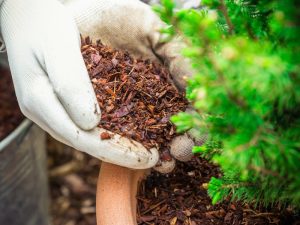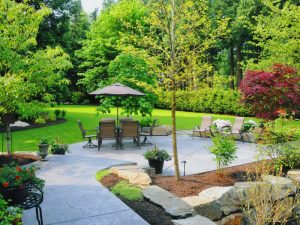As temperatures soar during Sydney’s hot summer months, many homeowners and garden enthusiasts may notice their plants developing burnt or scorched leaves. While some plant damage is inevitable due to the extreme heat, understanding why it happens and how to manage it can make a significant difference in maintaining a healthy garden.
This article will explore the various causes behind burnt leaves, how to protect your plants, and the best ways to revive heat-stressed vegetation. With advice from experienced gardeners and industry experts, you’ll be equipped with the knowledge needed to safeguard your garden through the harsh Australian summer.
What causes burnt leaves on plants during summer?
Burnt leaves are a common sign of heat stress and can be caused by several factors:
- Excessive heat: Prolonged exposure to high temperatures can cause plants to lose moisture faster than they can absorb it, resulting in dry, crispy leaves.
- Direct sunlight: Plants left in full, unfiltered sunlight for extended periods are more likely to suffer from sunburn. The intense light damages the chlorophyll in the leaves, turning them brown or white. Understanding the role of chlorophyll in plant health is essential, as this pigment not only enables plants to absorb sunlight for energy but also plays a key role in maintaining their overall vitality.
- Overexposure to wind: Hot, dry winds can speed up moisture loss from plants, causing dehydration and scorching.
- Water stress: Insufficient or irregular watering during summer can lead to dry, burnt leaves, especially when combined with high heat.
- Fertiliser burn: Excessive use of fertilisers, particularly those high in nitrogen, can cause plants to burn, as the roots may struggle to absorb too much nutrition in high temperatures.
Does mulching help protect plants from summer heat?
Yes, mulching can be an effective strategy to protect your plants during summer. Mulch helps to:
- Conserve moisture: By reducing evaporation, mulch helps maintain consistent soil moisture levels, which is crucial during the dry summer months.
- Regulate soil temperature: Mulch acts as a buffer, keeping soil temperatures cooler during the day and warmer at night, preventing rapid temperature fluctuations.
- Suppress weeds: By blocking weed growth, mulch reduces competition for water and nutrients, allowing your plants to thrive.
Types of mulch for summer heat protection:
- Organic mulch (e.g., bark, straw, compost): Excellent for retaining moisture and enriching the soil as it decomposes.
- Inorganic mulch (e.g., pebbles, gravel): Better for drought-resistant plants and can be used to maintain aesthetic appeal around hardscaping.
Which plants are best suited for Sydney’s summer climate?
Sydney’s subtropical climate means summers can be hot and humid, with temperatures often exceeding 26°C (79°F). Choosing the right plants for this climate can make a huge difference in keeping your garden healthy and vibrant.
Best plants for summer in Sydney:
- Native Australian plants: These plants are naturally adapted to Sydney’s summer conditions. Examples include:
- Kangaroo Paw: Thrives in full sun and handles heat well.
- Bottlebrush: Known for its drought resistance and attractive blooms.
- Grevillea: A hardy shrub that tolerates heat and poor soils.
- Succulents and Cacti: These plants are perfect for dry, hot climates. Their thick leaves store water, making them resilient during hot spells.
- Herbs: Mediterranean herbs like rosemary, thyme, and oregano can handle the summer heat, provided they’re in well-draining soil and receive regular watering.
Furthermore, when choosing the best grass types for Australian summers, it’s important to select varieties that are drought-tolerant and can withstand the intense heat and dry conditions typical of the season.
Why do burnt leaves appear even with regular watering?
Even if you water your plants regularly, burnt leaves can still appear due to several factors:
- Watering time: Watering during the hottest part of the day (typically between 12 PM and 3 PM) can cause water droplets on the leaves to magnify the sunlight, effectively “burning” the leaves. It’s best to water early in the morning or late in the evening.
- Soil drainage: The roots may become waterlogged if the soil doesn’t drain well, leading to poor absorption and plant stress. Ensure your plants are in well-draining soil, or use raised beds if necessary.
- Root damage: Even with consistent watering, damaged or compacted roots may not be able to absorb water effectively, leading to dehydration and leaf scorch.
Additionally, if you’re wondering, “Why are your plants turning yellow?” it could be a sign of several issues, including nutrient deficiencies, improper watering, or environmental stress, all of which can be addressed with the right care and attention.
Can landscaping design reduce plant sun damage?
Yes, strategic landscaping design can play a significant role in reducing sun damage to your plants. Some effective techniques include:
- Planting shade trees: Deciduous trees such as maples or elms provide shade during the hottest months while allowing sunlight to reach your plants in winter when they need it most.
- Using shade cloths: Shade netting can protect delicate plants from harsh sunlight, particularly in areas with prolonged sun exposure.
- Grouping plants with similar needs: Arrange plants that require similar water and light conditions together to create microclimates that offer protection from direct sunlight.
If you’re struggling to keep your garden healthy during the summer heat, it might be time to get professional garden landscaping services to help design a garden that thrives in extreme weather conditions.
Should you trim burnt leaves or leave them to recover?
Trimming burnt leaves depends on the extent of the damage:
- Minor damage: If only a few leaves are affected, leave them on the plant. The leaves can still contribute to photosynthesis and help the plant recover.
- Severe damage: For heavy sunburn or heat stress, it’s best to remove severely burnt leaves to prevent the plant from expending energy trying to repair them. This can help the plant direct its resources toward new growth.
In either case, avoid pruning too much during extreme heat, as this can stress the plant further.
What is the best way to revive heat-stressed plants?
If your plants are suffering from heat stress, there are several steps you can take to help them recover:
- Deep watering: Water your plants deeply but infrequently, ensuring that moisture reaches the root zone. This encourages deep-root growth and improves drought tolerance.
- Mulch: Apply a fresh layer of mulch around your plants to help retain moisture and regulate soil temperature.
- Shade protection: Use shade cloth or move pots to cooler, shaded spots, particularly during the hottest part of the day.
- Fertilise: Use a balanced, slow-release fertiliser to encourage healthy growth once the plant shows signs of recovery.
How can you prevent burnt leaves on plants in extreme heat?
Preventative care is the best way to keep your garden healthy during summer.
Essential summer gardening tips:
| Method | Benefits |
| Mulching | Reduces soil temperature and retains moisture |
| Drip irrigation | Delivers water directly to roots, preventing evaporation |
| Shade structures | Shields sensitive plants from intense sun exposure |
| Native plant selection | Ensures plants can withstand local climate conditions |
| Regular pruning | Promotes airflow and reduces water loss |
Revitalise your garden with expert care
Keeping your garden lush and healthy in Sydney’s scorching summer requires expert care. All Green Gardening & Landscaping offers professional services to help you:
- Design heat-resistant landscapes
- Implement effective mulching and irrigation
- Choose the best plants for Sydney’s climate
- Maintain your garden with expert trimming and care
Our team is known for going above and beyond to ensure customer satisfaction. From handling tricky and hazardous tree trimming jobs to dealing with challenging neighbours, we work professionally, efficiently, and with great attention to detail. We always prioritise your needs, offering fair pricing and expert service, no matter how complex the task.
Contact All Green Gardening & Landscaping today for tailored gardening solutions in Sydney. Let’s keep your garden thriving all year round!



